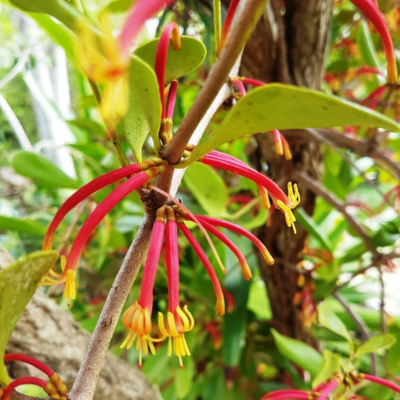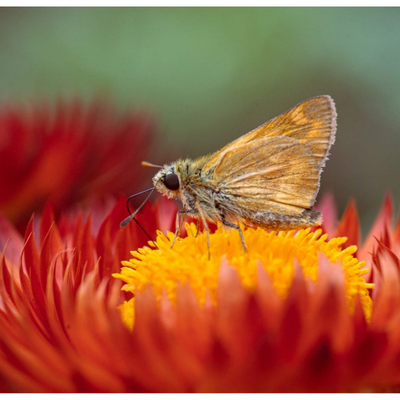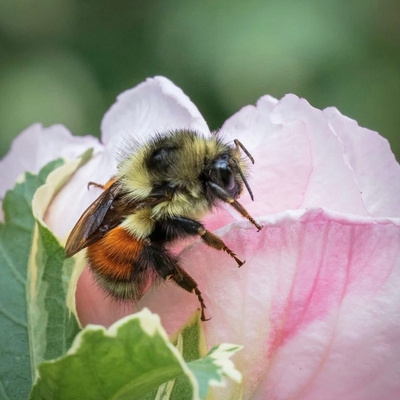

Flowers come in all kinds of different shapes, sizes, and colors, and most are pollinated by animals. It is the co-evolution of plants and their pollinators that is responsible for the size, shape, and structural diversity that we see in plants today.
This talk will help explain many of the mysteries surrounding how flowering plants have evolved to attract very specific pollinators.
- Did you know that the speckles on a rhododendron flower are actually runways?
- Did you know that some flowers must be forced open by birds before they can be pollinated?
- Did you know that a sunflower is actually a collection of flowers? It has ultraviolet markings that point to its center.
There is so much more to know about the flowers we tend to take for granted! Join for a night of learning, desserts & wine, in a gorgeous fall garden setting.
Speaker Bio:
Carol A. Wilson is a botanist in the University and Jepson Herbaria at the University of California, Berkeley. She is the curator of Iridaceae and mistletoe, an associate researcher and principal investigator on research projects, and a mentor who works with undergraduate and graduate students. Previously, she held positions at Portland State University, Portland, OR, and Claremont Graduate University and California Botanic Garden, Claremont, CA. She earned her Ph.D. at the University of California, Berkeley, where she studied Iris native to Washington, Oregon, and California, and was a postdoctoral fellow on a morphological study of African Loranthaceae at the Royal Botanical Gardens, Kew. Carol has continued her research focus on the systematics, biogeography, and morphology of Iris and mistletoe while also contributing as a collaborator and/or mentor to botanical research on other subjects. Her research has been published in leading academic journals and books, and her projects have been funded by the National Science Foundation, the State of California, and private foundations. In addition to this scholarly work, Dr. Wilson is actively involved in the scientific community, serving in several capacities within botanical organizations and presenting her research at national and international conferences.

Animal pollinators use flowers for different purposes, mainly for food, but sometimes to find mates or lay eggs. In the process, they all assist in the reproduction of flowering plants. This talk will focus on how pollinators have evolved to find the perfect flower for their needs.
We will talk about how animals rely mainly on sight and smell to select which plants to visit. Color variations, often imperceptible to humans, and floral scents unique to each species can help pollinators find the specific flower they are seeking.
Learn about the research into the evolutionary interplay between flowers and pollinators that is continually revealing new wonders that expand and challenge our concept of animal pollination.
Speaker Bio: Heidi Dobson
Heidi’s long-term research interests focus on how bees select which flowers to visit, with a special emphasis on flower-specialist solitary bee species, using primarily behavioral and chemical approaches. She earned her BA in Botany and BS in Agricultural Sciences from the University of California, Berkeley (1976), her MS in Entomology from UC Davis (1980), and her PhD in Botany from UC Berkeley (1985).
Heidi conducted five years of postdoctoral research on the chemical ecology of flowers, particularly pollen, at the Ecological Research Station on the island of Öland, Sweden. In 1992, she joined the faculty of the Biology Department at Whitman College, where she is responsible for the plant-focused curriculum, serves as Director of the Herbarium and teaching greenhouses, and mentors undergraduate students in bee research, both in Sweden and locally in eastern Washington. Almost every summer since coming to Whitman, Heidi has invited undergraduate students to collaborate with her on bee research, either abroad in Sweden or locally.

How should one go about creating a bee-friendly garden? With at least 100 different species of bees present in Portland gardens, do we need to know exactly what each type needs before we can effectively create habitat for them? It turns out to be much simpler than that. This talk will cover the fundamentals of the different types of bees, their life cycles, and how to ensure that your garden provides year-round habitat to support their needs. While many pollinator garden designs focus primarily on the flowers that bees and other pollinators use for food, bees cannot successfully reproduce unless they have safe places to nest and for their young to develop. Learn strategies you can use to create a garden that gives bees everything they need to thrive.
Speaker Bio: Susan Masta
Dr. Susan Masta is an associate professor of biology at Portland State University, where she teaches invertebrate zoology, evolution, and evolutionary medicine. She has studied bees in Portland as part of a broader research program that has included genetic, genomic, systematic, and biogeographic work on bees, pseudoscorpions, spiders, and amphibians. Susan is also an avid gardener; she and her husband tend a garden in Southwest Portland designed for native bees, other insects, birds, and wildlife. She has identified over 60 species of bees on their quarter-acre property.